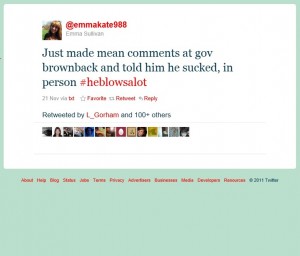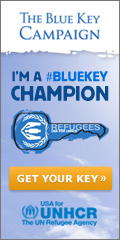 After Tripoli fell to anti-Gaddafi forces last August, I remembered a particularly clairvoyant blog post/radio interview I ran across a couple of months earlier. The blog post/radio interview gave a spot on analysis of how information could be used to empower Libyans to take back their own country.
After Tripoli fell to anti-Gaddafi forces last August, I remembered a particularly clairvoyant blog post/radio interview I ran across a couple of months earlier. The blog post/radio interview gave a spot on analysis of how information could be used to empower Libyans to take back their own country.
When I went back to the blog to find out if its author had any new predictions, I found out the Mountain Runner blog was on hiatus because its author had recently become executive director of the U.S. Advisory Commission on Public Diplomacy (ACPD). I was relieved to learn somebody was at the helm who understood social media’s power to create communications swarms and was presumably on top of implications for foreign publics’ support of U.S. culture, values, policies, and interests.
To my shock and surprise, however, I ran across a tweet and blog post just before Christmas indicating the ACPD was being abolished after 63 years of service. Apparently, due to efforts to balance the federal budget, the ACPD was not reauthorized by Congress and ceased operations on Dec. 16, 2011. So what happened to its visionary executive director? Matt Armstrong was laid off just a little over a week before Christmas.
Ho ho ho!!!
If Congress’s actions really are guided by budget-cutting zeal versus a strategic reorganization of U.S. public diplomacy and strategic communications initiatives (as far as I can find out, the new Integrated Strategic Counterterrorism Communications Initiative has nothing to do with this), we’re in trouble as a country. Today, more than ever people unfriendly to U.S. culture, values, policies, and interests have the potential to take control of the political dialogue across geographic boundaries. All they need is passion, Internet or mobile connectivity, and social media savvy to spread their messages and potentially fuel mass collaboration in instigating change (or wreaking havoc as the case may be).
I, for one, would sleep a lot better knowing Congress had a team advising it on making sure U.S. Government activities that intend to understand, inform, and influence foreign publics break free of conventional wisdom, recognize discontinuity, and react to change. Until we discover some sort of grand strategy behind Congress’s move, however, we’re left to find comfort in the fact the U.S. Department of State is abandoning its Cold War mindset only now.
Do you think cutting the ACPD was a good cost-cutting measure? Please feel free to challenge my analysis in the comments section.





